Last week the nominees for the 2009 Shuster Awards were announced. The Shuster Awards started off as Canada’s fan-awards, with Canadian comics fans invited to vote on the nominees as selected by a committee. It looks like they’ve moved to a jurried award this year, I have no idea if that’s new or from previous years? I’m sure someone will be along momentarily to clarify.
At any rate, the Shusters tend to have a different focus than the recently-announced Doug Wright Awards, but I’ve been trying to figure out a way to delineate the differences between the two awards and their aims for the past 10 minutes, in a way that won’t offend one or both of the committees who put their respective awards together, and I can’t do it. I think the fact that none of the nominees on the Wright Awards list are on the Shuster List, or vice versa, except for Mariko Tamaki and Kate Beaton? That speaks for itself right there. Variety is the spice of life…
Anyway, congratulations to all of those nominated!
—
JOE SHUSTER AWARDS 2009 NOMINEES for Work Published in 2008
Artist/Dessinateur
* Marc Delafontaine – Les Nombrils, Tome 3 : Les liens de l’amitié (Dupuis)
* Dale Eaglesham – Justice Society of America #12, 14-15, 18-22 (DC Comics)
* David Finch – Ultimatum #1-2 (Marvel Comics)
* Karl Kerschl & Serge LaPointe – Teen Titans: Year One #1-6 (DC Comics)
* Jacques Lamontagne – Les Druides, Tome 4 : La Ronde des Géants (Soleil Productions)
* Steve McNiven – Amazing Spider-Man #546-548, Wolverine #66-70 (Marvel Comics)
* Steve Rolston – Emiko Superstar (DC/Minx), “Familiar” – House of Mystery #4 (DC/Vertigo), You Ain’t No Dancer #3 (New Reliable Press)
* Stephen Sadowski – Avengers/Invaders #1-7 (Marvel Comics/Dynamite Entertainment), Superpowers #0 (Dynamite Entertainment), Jack the Lantern: Ghosts #2 (Castle Rain Entertainment)
Cartoonist/Créateur
* Grégoire Bouchard – Vers les Mondes Lointains (Paquet)
* Darwyn Cooke – “Chapter X: The Greater Good” Justice League: The New Frontier Special #1, The Spirit #12 (DC Comics)
* Francis Descharnais – Burquette (Les 400 coups)
* Jean-Paul Eid – Des tondeuses et des hommes (La Pastèque)
* Michel Gagne – “The Saga of Rex” Chapter 4 – Flight Vol. 5 (Ballantyne Books)
* Faith Erin Hicks – The War at Ellsmere (Slave Labor Graphics)
* Jeff Lemire – Essex County Vol. 3: The Country Nurse (Top Shelf)
* Seth – “Thoreau MacDonald” Kramer’s Ergot 7 (Buenaventura Press)
* Dave Sim – Glamourpuss #1-4, Judenhaas (Aardvark-Vanaheim)
Colourist/Dessinateur Couleur
* Jean-Francois Beaulieu – G.I. Joe: America’s Elite 31-36, Voltron: A Legend Forged 1 (Devil’s Due), Marvel Zombies 3 #1-3, Wonderful Wizard of OZ #1, X-Men: Divided We Stand #1, X-Men Legacy #215 (Marvel Comics)
* Blond – Team 14 #1 (Digital Webbing), Freshman: Summer Vacation Special #1, Magdalena/Daredevil #1, True Blood: The Great Revelation NN, Witchblade: Takeru Manga #11-12 (image/Top Cow), Ultimate Fantastic Four #50-59 (Marvel Comics), Beyond Wonderland #4, Grimm Fairy Tales 2008 Annual (Zenoscope)
* Chris Chuckry – Brave and the Bold #17-18, Countdown to Mystery #4-8, Simon Dark #4-7, Two Face: Year One #1-2 (DC Comics), Air 1-5 (DC/Vertigo), G.I. Joe #0 (Devil’s Due), Comic Book Tattoo (image), Amazing Spider-Man #546, 565-567, newuniversal: Shockfront #1-2, The Twelve #1-8 (Marvel Comics)
* Maryse Dubuc – Les Nombrils, Tome 3 : Les liens de l’amitié (Dupuis)
* Nathan Fairbairn – Fear Agent 21 (Dark Horse), Pilot Season: The Core #1 (image/Top Cow), Civil War: House of M #3, Guardians of the Galaxy #1-3, Secret Invasion: Who Do You Trust? NN, Wolverine: Origins #31, X-Men: Divided We Stand #2, X-Men: Kingbreaker #1, X-Men Legacy #217, X-Men: Manifest Destiny #1, 3, Young Avengers Presents #1 (Marvel Comics), Stephen Colbert’s Tek Jansen #3 (Oni Press)
* Lovern Kindzierski – Sandman: The Dream Hunters #1-2 (DC Comics), The Worlds of Dungeons & Dragons #1-2Coraline (HarperCollins), Giant-Size Incredible Hulk #1 (Marvel Comics) (Devil’s Due),
* François Lapierre – “Gédéon et la bête du lac” Contes et légendes du Québec (Glénat Québec), Magasin général 4 (Casterman)
* Dave McCaig – Star Wars: Dark Times #11-12 (Dark Horse), Action Comics #861-863, Final Crisis: Rogue’s Revenge #1-3. Joker’s Asylum: The Penguin #1, JSA Classified #35-37 (DC Comics), Family Dynamic #1-2 House of Mystery #4, Northlanders #2-8, 11-2 (DC/Vertigo), Broken Trinity: Angelus #1, First Born: Aftermath #1, Pilot Season: The Core #1 (image/Top Cow), Fantastic Four Cosmic Size Special #1, Secret Invasion X-Men #1-4, Ultimate Iron Man II #3-5 (Marvel Comics), Stephen Colbert’s Tek Jansen #2 (Oni Press) (DC/Johnny DC),
Writer/Écrivain
* Ian Boothby – Bart Simpson’s Treehouse of Horror #14, Bongo Comics Free-For-All 2008, Futurama #35-39, Simpsons Comics #136, 141, 148, Simpsons Summer Shindig #1, Simpsons Super Spectacular #7 (Bongo Comics)
* Cecil Castellucci – Janes in Love (DC/Minx)
* Darwyn Cooke – “Dragster Riot starring Robin the Boy Wonder”, “Wonder Woman and Black Canary” Justice League: The New Frontier Special #1, Superman Confidential 11 (DC Comics)
* Maryse Dubuc – Les Nombrils, Tome 3 : Les liens de l’amitié (Dupuis)
* Ray Fawkes – The Apocalipstix (Oni Press)
* François Lapierre – “Gédéon et la bête du lac” Contes et légendes du Québec (Glénat Québec)
* Mariko Tamaki – Emiko Superstar (DC/Minx), Skim (Groundwood Books)
* J. Torres – The Family Dynamic #1-3, Legion of Super-Heroes in the 31st Century #11, 13, 17-19, Teen Titans Go! #51-55 (DC/Johnny DC), Wonder Girl #5-6 (DC Comics)
Cover/Couverture
* Adrian Alphona – Spider-Man Loves Mary Jane Season Two #1 Variant (Marvel Comics)
* Darwyn Cooke – The Spirit #12 (DC Comics)
* Marc Delafontaine – Les Nombrils, Tome 3 : Les liens de l’amitié (Dupuis)
* Dale Eaglesham – Justice Society of America #14 Variant (DC Comics)
* David Finch -Amazing Spider-Man #572 Variant (Marvel Comics)
* Philippe Girard – Les Ravins (Mécanique Générale)
* Niko Henrichon – Hostile Tome 1 (Dupuis)
* Steve McNiven – Kick-Ass #1 Variant (Marvel Comics)
* Dean Motter – Mister X: The Condemned #1 (Dark Horse)
* David Sim – Glamourpuss #4 Zombie Variant (Aardvark-Vanaheim)
Webcomics/Bandes Dessinées Web
* Kate Beaton – Hark! A Vagrant http://harkavagrant.com
* Michael Cho – Papercut http://www.transmission-x.com/_papercut
* Lar De Souza & Ryan Sohmer – Least I Could Do http://www.leasticoulddo.com / Looking for Grouphttp://www.lfgcomic.com/
* Kathryn & Stuart Immonen – Moving Pictures http://www.immonen.ca/comics
* Karl Kerschl – The Abominable Charles Christopher http://www.abominable.cc
* Gisele Lagace – Menage A 3 http://www.menagea3.net/
* Ramón K. Pérez– Kukuburi http://www.kukuburi.com / Butternut Squash (w/Robert Coughler) http://www.butternutsquash.net
* Cameron Stewart – Sin Titulo http://www.sintitulocomic.com/
Publisher/Éditeur
* Aardvark-Vanaheim
* Arcana Studio
* Conundrum Press
* Drawn & Quarterly
* La Pastèque
* Les 400 Coups/Mécanique Générale
* Red 5 Comics
* Udon Entertainment
—
All of this information and much, much more available at http://joeshusterawards.com/.
– Christopher






